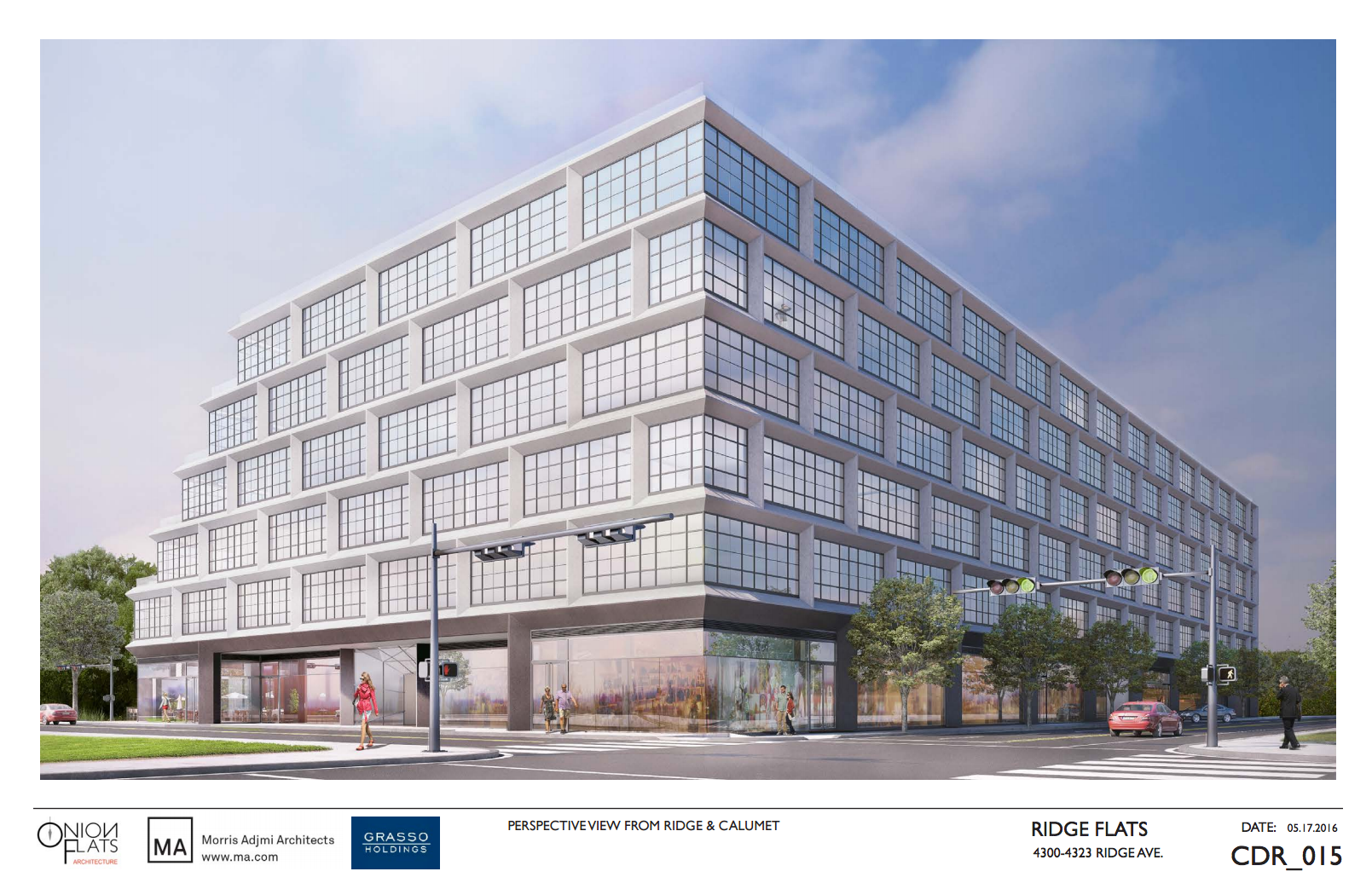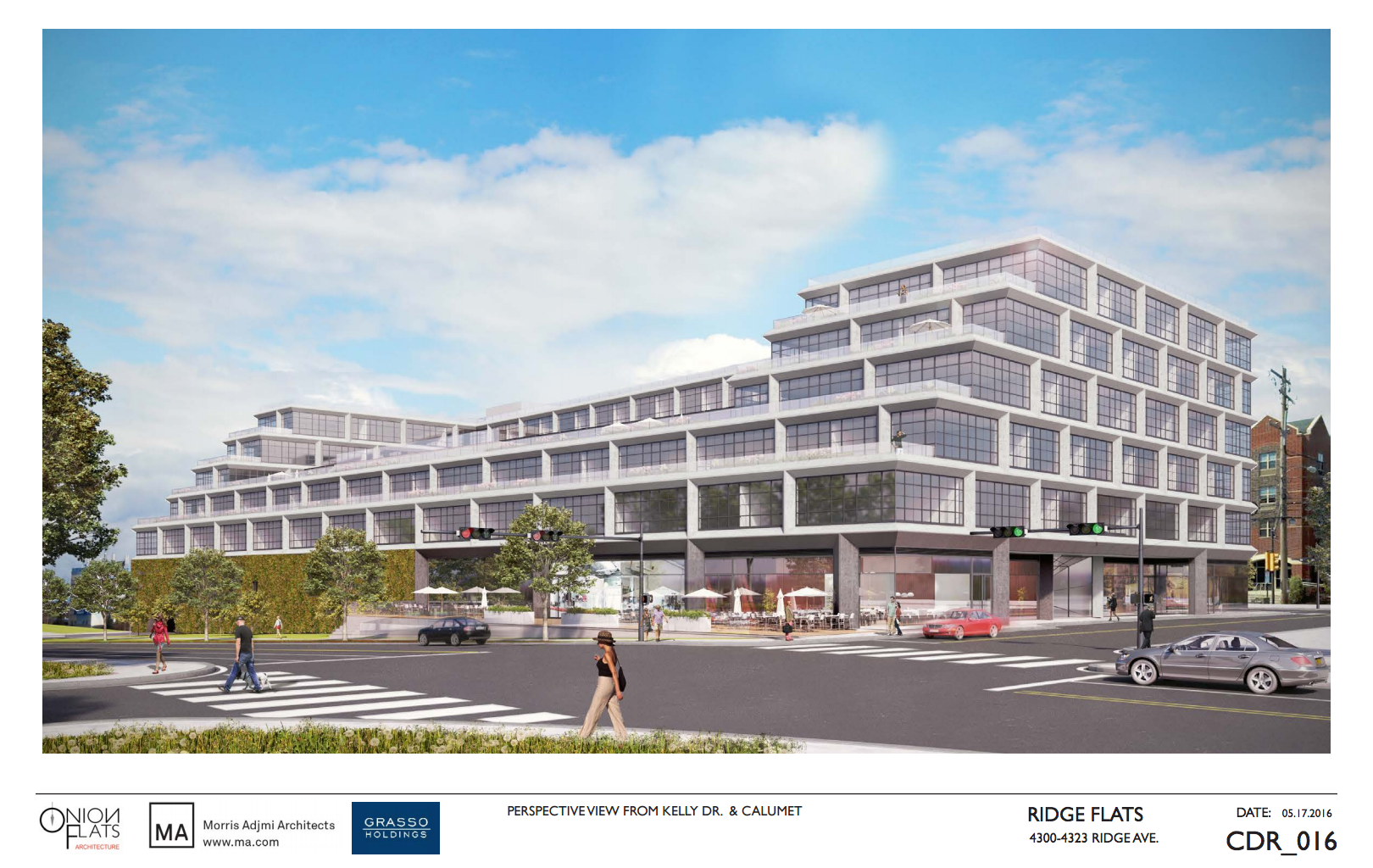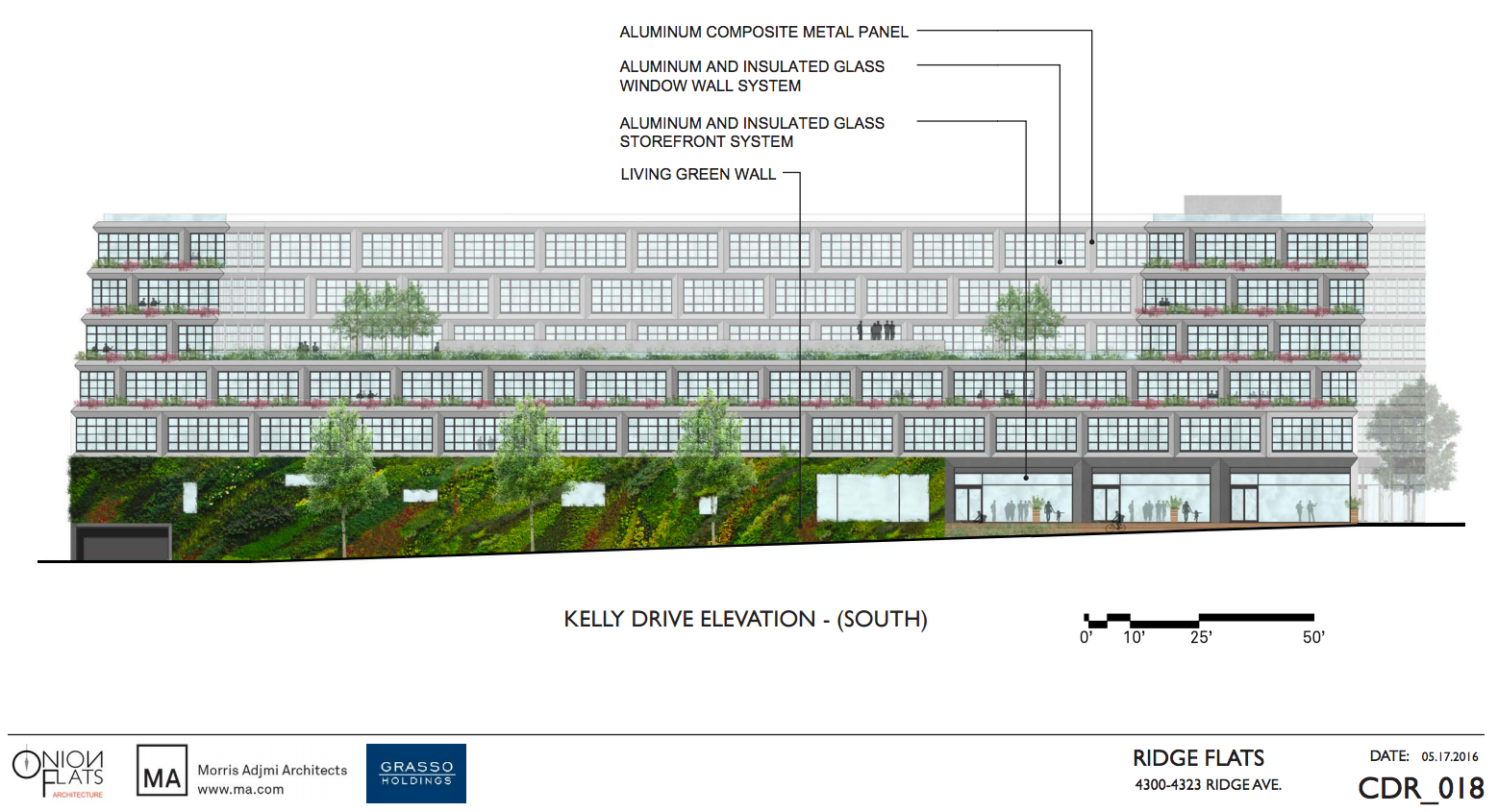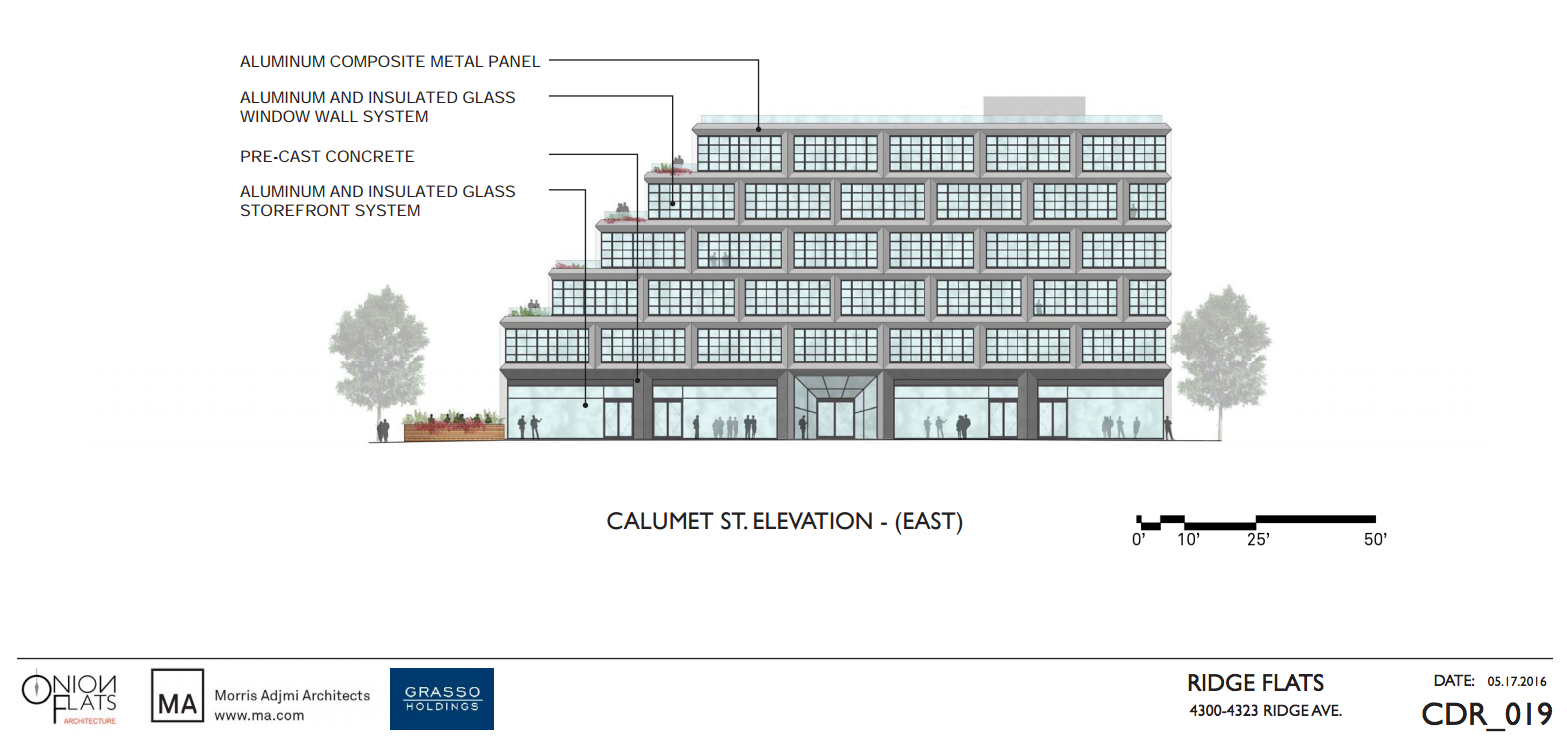Ridge Flats gets okay from Civic Design Review

In offering two pages of detailed commentary, they did not go easily into that good night. Still, the Civic Design Review Board (CDR) eased the way for Ridge Flats, a mixed-use project from Grasso Holdings that faces Kelly Drive, to move on to the Zoning Board of Adjustment.
Located near the Falls Bridge, sited between the Drive and Ridge Avenue at Calumet Street, the building is designed by New York-based Morris Adjmi (MA) Architects with locally-based Onion Flats as architect of record. As presented Tuesday, the six-story building will offer 206 apartments, 194 parking spaces, bike parking spots, a living green wall on Kelly Drive, a robust retail program (including the possibility of a grocery store), and a corner cafe.
MA Architect Michael Zweck-Bronner’s presentation on the building showed a staggered U-shaped design that he said attempts to gesture toward the river, allowing breathing room, with a terraced rooftop on the second floor (complete with pool). Material choices skew mostly glass and steel arranged in a grid material. Although relieved by ground floor retail, the Ridge and Calumet facades appear more massive, a sticking point for just about everyone in the room, including CDR board members, community representatives, and Planning Commission officials.
“The building seems a little relentless,” observed Nancy Rogo Trainer, CDR chair. She wondered if even a “small notch” would break what she called a “monotonous, regular, and large” exterior. “It needs some kind of life,” she concluded. “It can’t feel like a wall between East Falls and Kelly Drive.”
At one point, developer David Grasso took the podium to highlight the project’s street improvements and spoke of his commitment to activating and improving Ridge Avenue’s commercial climate. By including what he called hotel-level furnished apartments, Grasso said he believes Ridge Flats offers an “elevated” program that surpasses that of typical multi-family projects.
In his overview, Planning Commission staff member Jack Conviser noted that the site is currently zoned CMX-2.5, but even if it receives CMX-3 up zoning, as seems likely, it will still require a few variances. He praised its Complete Street compliance and overall public environment but expressed concerns about the design. These included the remoteness of one outlying retail space, the presence of a three-lane lay by (he recommended it be cut to two lanes), the need for a curb cut on Kelly Drive (required, said architects, by PennDOT) and the viability of the green wall, and the building’s proposed 300-feet of unbroken width.
In assembling their comments, CDR members batted around a few suggestions. Landscape architect Anita Toby Lager disagreed with Conviser and said that the hydroponic wall would fill out, but she emphasized the need for a good maintenance plan. Michael Johns, an architect and Housing Authority executive, agreed with the need for a three-car-wide lay-by while Rogo Trainer disagreed. Architect Daniel Garofalo suggested that the designers push beyond meeting Energy Star sustainability regulations and strive for third-party (i.e. LEED) certification and Rogo Trainer seconded that. Garofalo also suggested that reorienting the building’s facade system so that it better responds to exposure to sun and shade might help give it more texture, while developer Leo Addimando said that even the presence of different colored panels could achieve that.
In the end, the board accepted most of the Planning Commission’s staff recommendations and declared the review process completed.
The second project on the agenda, the renovation and expansion of 2400 Market Street, was pulled by the developer.
WHYY is your source for fact-based, in-depth journalism and information. As a nonprofit organization, we rely on financial support from readers like you. Please give today.







